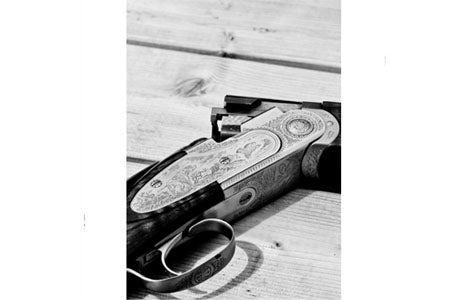Do you prefer being the very first owner of a brand new gun or enjoy the search for your ideal used piece that’s been broken in? In this guide, we run through the advantages of buying new or used, as well as the things to look for when buying a second-hand firearm.
Advantages of new guns:
- No wear from use or problems resulting from repair and restoration.
- Incorporation of the latest technology which can result in more accurate shooting
- Manufacturer and reseller warranties are standard on new guns, whereas they’re harder to obtain for used guns.
- Guaranteed documentation which helps ensure you meet legal requirements and makes it easier to resell in the future.
Advantages of used guns:
- Quality guns are built to last, and some are still perfectly useable and accurate hundreds of years after they were built.
- If you find a good deal, pricing can be much lower while the quality can be just as good as a new gun.
- If you’re a fan of a certain model, you may be able to purchase a gun that is no longer in production.
- Used guns have been “broken in”
- Depending on the market, you can buy low and sell high. Some are known to make quite a profit off reselling used guns after holding onto them for a few years and waiting for an upswing in the economy and firearms market.
Now you’re taking the plunge and shopping for a used gun. Every gun is different, but below are the most obvious red flags that can help you avoid costly repairs and injury. If in doubt, bring an expert along and get their judgement before making the final decision.
What to look for when buying a used rifle:
- Give the entire rifle a good once (or twice) over. Check the entire condition as there should not be any obvious imperfections that might affect the accuracy of the rifle. While some signs of wear will be there, the gun shouldn’t show signs of neglect. There is a high chance that if the external parts of the rifle have obvious imperfections and signs of neglect, the critical internal components have been neglected as well.
- Find out when the rifle’s headspace was last checked. You’ll usually find that this measurement has not been taken, but it is particularly important to get in older rifles. If you’re not experienced with older guns, stick to post WW II pieces.
- Inspect the condition of the stock. Splits and cracks in the stock and forearm should be a red flag. If you suspect cracks, ask to remove the stock from the rifle.
- Look out for discoloured wood at the back of action. Discolouration is a sign of an over-oiled rifle which has softened the wood as a result. Ignoring this warning sign may require you to replace the stock.
- Dismantle the rifle and check each part for wear, tear and maintenance. Having romoved the bolt make sure to check the bore of the barrel as imperfections can often be easily spotted.
- Ask to bump the butt of the cocked rifle against a padded surface such as a carpeted floor. If the firing pin or hammer drop as a result of this bump, it is unsafe and should not be purchased.
What to look for when buying a used shotgun:
- Many of the tips above for rifles also apply to shotguns. The external condition says a lot about how the gun was cared for, so inspect it from end to end. Similarly, check the condition of the stock for cracks and splits, and look out for discolouration.
- Dismantle the gun and check the barrels for excessive wear and, in particular, for pitting at the end of the chamber. Get the ends measured to tell you what life is left in the barrels….particularly important if the gun has been used extensively for wildfowling with steel shot.
- Fire the gun with snap caps in place to check the firing mechanism.
- The most critical feature of finding the perfect shotgun is getting the right stock fit. The stock should be long enough to keep the thumb of your grip hand away from the face under recoil, and short enough not to snag under your armpit when you shoulder the gun.
- If the shotgun has interchangeable chokes, ensure that you get the full set. This usually includes full, modified and improved cylinder tubes. Most importantly, ensure that they can actually be screwed in and out or the set will be useless.
So in the end, do you want a brand new gun to compliment your shooting jacket or do you opt for a used one? Well, rather than deciding on new or used before you start searching, have a look at both and decide based on the individual pieces you come across. You may be in the market for a new gun, yet come across your ideal used rifle or shotgun at a good price that could benefit from a little gun care. Alternatively, you might find that the cost savings isn’t that significant between new and used and invest in a new piece that is guaranteed to be void of malfunctions and imperfections.

